
Do you have a question about the Siemens SIMATIC S7-1500 Automation System and is the answer not in the manual?
| Series | SIMATIC S7-1500 |
|---|---|
| Programming | TIA Portal (Totally Integrated Automation Portal) |
| Protection Class | IP20 |
| CPU | Various models available (e.g., CPU 1511-1 PN, CPU 1518-4 PN/DP) |
| Controller Type | Modular Controller |
| Programming Languages | LAD, FBD, STL, SCL, GRAPH |
| Communication Interfaces | PROFINET, PROFIBUS, Ethernet, OPC UA |
| Digital Inputs | Varies by model and expansion modules |
| Digital Outputs | Varies by model and expansion modules |
| Analog Inputs | Varies by model and expansion modules |
| Analog Outputs | Varies by model and expansion modules |
| Backplane Bus | High-speed backplane bus for fast communication between modules |
| Redundancy | Supported with specific models and configurations |
| Safety | Integrated safety functions available |
| Scalability | Highly scalable with modular expansion |
| Operating Temperature | 0°C to 60°C |
Notices to ensure personal safety and prevent damage to property, graded by danger.
Defines personnel qualified to operate the system based on training and experience.
Guidelines for correct usage, transport, storage, installation, and maintenance.
Provides information on configuring, installing, wiring, and commissioning.
Basic knowledge of automation technology is needed to understand the manual.
Documentation applies to all products from the S7-1500 product family.
Describes the modular structure and range of topics covered in SIMATIC product documentation.
Lists system and function manuals available for the S7-1500 automation system.
Details S7-1500 Motion Control, including basics and configuration.
Lists manuals for CPU 1511-1 PN, CPU 1513-1 PN, and CPU 1516-3 PN/DP.
Introduces the S7-1500 as an advanced automation system with new performance features.
Provides an overview of essential components like mounting rails, PSUs, CPUs, and I/O modules.
Describes scalable configuration, wide range of modules, U connectors, and power segments.
Highlights features like twistable front connectors, pre-wiring, EMC concept, and snap-in positions.
Summarizes essential properties of CPUs, including memory, interfaces, and web server support.
Details essential properties of digital input modules, including number of inputs and isolation.
Summarizes essential properties of digital output modules, like number of outputs and type.
Details essential properties of analog input modules, including resolution and measurement types.
Lists essential properties of system power supply modules, including rated input voltage and output power.
Summarizes essential properties of load current supplies, including input voltage and output current.
Details essential properties of technology modules, such as supported encoders and counting functions.
Summarizes essential properties of communication modules for point-to-point and PROFIBUS/PROFINET links.
Describes the single-row configuration of S7-1500 modules on a mounting rail.
Distinguishes between system power supplies (PS) and load current supplies (PM) for the system.
Explains when system power supplies are required and their placement in slots.
Details how to compare infed power with required power for module supply.
Describes how load current supplies feed I/O circuits, sensors, and actuators with 24 VDC.
Covers unenclosed equipment installation in housings, cabinets, and operating rooms.
Provides instructions for installing mounting rails, including tools and required accessories.
Details the procedure for installing a system power supply module onto the mounting rail.
Explains the procedure for installing a load current supply module onto the mounting rail.
Provides steps for installing the CPU onto the mounting rail and connecting it.
Details the procedure for installing I/O modules following the CPU on the mounting rail.
Adherence to special rules and regulations for integrating the S7-1500 CPU in a plant.
Information on overall configuration with grounded infeed (TN-S network) and safety isolation.
Describes electrical isolation between system power supply, communication interfaces, and circuit components.
Specifies rules for connectable conductor cross-sections, stripping length, and connection technology.
Details the connection of supply voltage to the CPU via a 4-pole cable connector.
Explains connecting supply voltage to system and load current supply modules, including coding elements.
Describes the characteristics of front connectors for I/O modules, including clamping points and potential bridges.
Details the wiring of front connectors for I/O modules, including shield connection elements.
Provides steps to bring the front connector from the pre-wiring position into its final position.
Explains how to mark I/O modules using labeling strips and optional marking.
Explains the need to configure hardware components, assign parameters, and network devices.
Describes loading the CPU configuration into a project via hardware detection.
Explains I/O addresses, device addresses, and hardware identifiers assigned by STEP 7.
Details how digital module input/output addresses are composed of byte and bit addresses.
Describes how analog channel addresses are determined based on the module start address.
Explains process images, their advantages, and the subdivision into 32 process image partitions (PIP).
Describes how process image partitions are automatically updated per OB.
Explains using UPDAT_PI and UPDAT_PO instructions as an alternative to automatic updating.
Provides summary information about the necessary steps for commissioning an S7-1500.
Guidance for checking installation and wiring before initial power-on, presented as a checklist.
Recommends a procedure for the first commissioning, including hardware configuration and program upload.
Details the procedure for inserting and removing the SIMATIC memory card from the CPU.
Describes the steps and expected results for the initial power-on of the CPU.
Explains the CPU operating states (STARTUP, RUN, STOP) and mode transitions.
Guides on configuring CPU startup behavior, including startup type and hardware compatibility.
Details the function and special features of the CPU's STARTUP operating mode.
Explains the STOP mode where the user program is not executed and outputs are disabled.
Covers basics of memory reset, how to identify it, and the result after reset.
Describes reading and entering Identification and Maintenance (I&M) data for modules.
Explains the basic record structure for I&M identification data.
Emphasizes that I/O modules must only be inserted or removed when voltage is switched off.
Covers coding elements on I/O modules and front connectors to prevent incorrect insertion.
Provides steps for replacing an I/O module, including transferring the coding element.
Details how to replace a defective front connector and transfer the coding element.
Explains the 2-part coding element in power connectors to prevent incorrect module insertion.
Describes updating firmware for CPU, display, and I/O modules using firmware files.
Details how to restore the CPU to its 'as-delivered condition' by resetting to factory settings.
Explains testing user program operation, monitoring signals, and assigning values to tags.
Covers monitoring tags and operand areas, and modifying tags in watch tables.
Describes monitoring tags and forcing peripheral inputs/outputs using the force table.
Explains performing an LED flash test to identify stations in the hardware configuration.
Details using trace functions to record CPU tags based on trigger conditions.
Describes how to read out service data via the CPU's web server for diagnostics.
Introduces the SIMATIC memory card as program memory, data carrier, and firmware update card.
Details the physical insertion of the SIMATIC memory card into the CPU.
Lists the standard folders and files found on a SIMATIC memory card.
Explains options for deleting card contents using Windows Explorer or STEP 7 format.
Describes the procedure for formatting a SIMATIC memory card using STEP 7 via the CPU.
Explains how to set the SIMATIC memory card as a program card or firmware update card.
Details transferring project objects like blocks and the CPU folder to a SIMATIC memory card.
Describes the CPU's front cover display and operating keys for navigation and settings.
Highlights advantages of the CPU display, like reduced downtime and on-site setting changes.
Explains display behavior regarding operating temperature to increase service life.
Shows example views of CPU displays and explains CPU status data icons.
Lists and describes the available submenus on the CPU display.
Explains the meaning of icons displayed in the CPU menus.
Provides instructions on removing and replacing the CPU's front cover.
Identifies the available control keys on the CPU display: arrow keys, ESC, and OK.
Explains the functions of OK and ESC keys for menu navigation and editing.
Lists the settable languages for menu and message texts on the CPU display.
Explains how OB start events trigger OB execution or default system reactions.
Provides an overview of OB start events, priorities, OB numbers, and system reactions.
Details how OB assignment to event sources is made based on OB type and configuration.
Explains S7-1500 CPU priority classes and how OBs are executed based on priority.
Describes how the CPU handles overload situations by queuing or discarding events.
Explains the 'Enable time error' parameter for specifying overload levels triggering interrupts.
Describes functions for protecting the S7-1500 against unauthorized access.
Details the four access levels (complete, read, HMI, no access) for limiting CPU functions.
Guides on configuring access levels and passwords for the S7-1500 CPU.
Explains blocking CPU access locally via the display when the mode switch is in RUN position.
Describes protecting blocks (OB, FB, FC, DB) with passwords to prevent unauthorized access.
Allows binding programs or blocks to a specific SIMATIC memory card or CPU.
Provides options for protecting the CPU from unauthorized access using a secured front cover.
Covers general technical specifications, standards, test values, and approvals for S7-1500 modules.
Includes warnings about personal injury, damage, and explosion hazards in hazardous areas.
Confirms compliance with EC directives and harmonized European standards for PLCs.
Details Underwriters Laboratories Inc. approvals for industrial control and process control equipment.
Lists Factory Mutual Research (FM) approvals and usage conditions.
Specifies ATEX approval for apparatus in potentially explosive atmospheres.
Provides Korea Certification (KC) registration number and usage notes.
Confirms compliance with IEC 61131-2 standard for programmable logic controllers.
States that SIMATIC products are designed for industrial applications.
Notes that S7-1500 is for industrial use; residential use may impact radio/TV reception.
Covers EMC ability and compliance with NAMUR guideline NE21.
Specifies permissible ranges for temperature, humidity, and pressure during shipping and storage.
Details operating conditions exceeding DIN IEC 60721-3-3 requirements for mechanical and climatic factors.
Defines permissible ambient conditions for temperature, humidity, and pollutants.
Covers insulation design, contamination level, protection class, and degree of protection (IP20).
Provides information on deploying modules in Zone 2 potentially explosive atmospheres.
Provides dimensional drawings for various lengths of S7-1500 mounting rails.
Shows front and side view dimension drawings of a 35 mm wide CPU.
Provides front and side view dimension drawings of a 70 mm wide CPU.
Shows dimension drawings for I/O modules, including front, side, and open front cover views.
Details dimension drawings for I/O modules with shield contact elements.
Provides front and side view dimension drawings of a 35 mm wide system power supply.
Shows front and side view dimension drawings of a 70 mm wide system power supply.
Provides front and side view dimension drawings of a 50 mm wide load power supply.
Shows front and side view dimension drawings of a 75 mm wide load power supply.
Provides front and side view dimension drawings of the shielding bracket.
Details front and side view dimension drawings of the shield clamp.
Provides front and side view dimension drawings of the power supply element.
Shows dimension drawings for the labeling strip.
Provides front and side view dimension drawings of a communication module with shield bracket.
Lists various accessories and spare parts for the S7-1500 automation system with order numbers.
Provides order numbers and capacities for SIMATIC memory cards.
Highlights comprehensive services for machine constructors, solution providers, and plant operators.
Provides access to comprehensive online information for all aspects of Service & Support.
Offers support in project planning, design, and consultation on product and system questions.
Provides expert advice on technical questions and demand-optimized services.
Offers practical know-how directly from the manufacturer for extending competitive edge.
Provides support during project engineering and development, from configuration to implementation.
Offers services for commissioning and maintenance to ensure machine and plant availability.
Ensures plant and system operation with a worldwide network and optimum logistics chains.
Helps reduce downtime and unnecessary costs with worldwide repair facilities.
Offers a complete range of optimization services to increase productivity and reduce costs.
Provides comprehensive support for modernization from planning to commissioning.
Presents selected service packages for automation systems, coordinated for entire life cycle support.
Provides information to find personal contacts in the database for consultation, sales, and service.
Defines a programmable logic controller for process control, consisting of components and system functions.
Monitoring functions for detecting, localizing, classifying, and evaluating errors, faults, and alarms.
Upgrade of module firmware for functional enhancements to the newest firmware version.
Supply of input/output circuits of modules, sensors, and actuators.
German process and field bus standard specifying functional, electrical, and mechanical characteristics.
Open industrial Ethernet standard developing PROFIBUS and industrial Ethernet for communication.
Supply of I/O modules via the backplane bus.
Binary additional information of a digital input signal indicating signal validity.
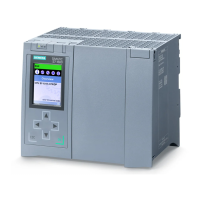
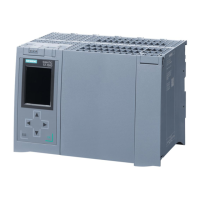


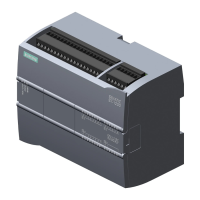
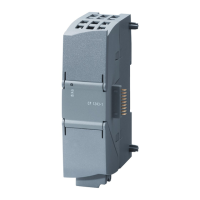
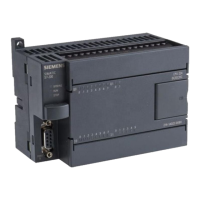
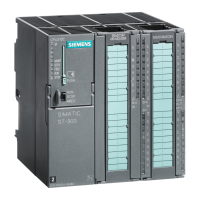

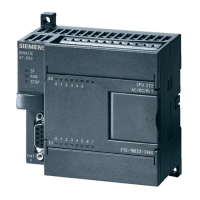
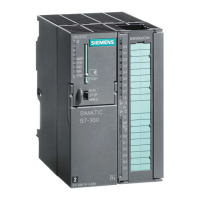

